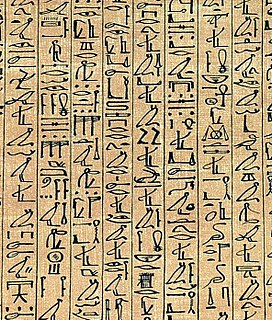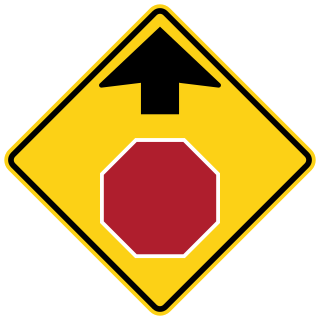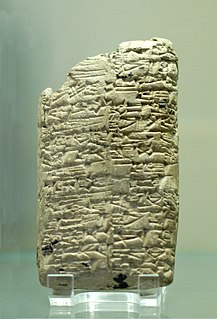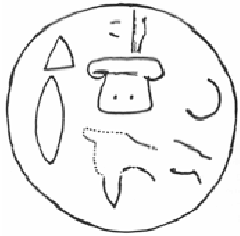Graphical overview

Timeline of communication technology

The 35th century BC in the Near East sees the gradual transition from the Chalcolithic to the Early Bronze Age. Proto-writing enters transitional stage, developing towards writing proper. Wheeled vehicles are now known beyond Mesopotamia, having spread north of the Caucasus and to Europe.

Sumer is the earliest known civilization in the historical region of southern Mesopotamia, modern-day southern Iraq, during the Chalcolithic and Early Bronze ages, and one of the first civilizations in the world along with Ancient Egypt and the Indus Valley. Living along the valleys of the Tigris and Euphrates, Sumerian farmers were able to grow an abundance of grain and other crops, the surplus of which enabled them to settle in one place. Prehistoric proto-writing dates back before 3000 BC. The earliest texts, from c. 3300 BC, come from the cities of Uruk and Jemdet Nasr; early cuneiform script emerged around 3000 BC.

Egypt, officially the Arab Republic of Egypt, is a country spanning the northeast corner of Africa and southwest corner of Asia by a land bridge formed by the Sinai Peninsula. Egypt is a Mediterranean country bordered by the Gaza Strip and Israel to the northeast, the Gulf of Aqaba and the Red Sea to the east, Sudan to the south, and Libya to the west. Across the Gulf of Aqaba lies Jordan, across the Red Sea lies Saudi Arabia, and across the Mediterranean lie Greece, Turkey and Cyprus, although none share a land border with Egypt.
Dr. Erna Schneider Hoover is an American mathematician notable for inventing a computerized telephone switching method which "revolutionized modern communication" according to several reports. It prevented system overloads by monitoring call center traffic and prioritizing tasks on phone switching systems to enable more robust service during peak calling times. At Bell Laboratories where she worked for over 32 years, Hoover was described as an important pioneer for women in the field of computer technology.

NMT is the first fully automatic cellular phone system. It was specified by Nordic telecommunications administrations (PTTs) and opened for service on 1 October 1981 as a response to the increasing congestion and heavy requirements of the manual mobile phone networks: ARP (150 MHz) in Finland, MTD (450 MHz) in Sweden and Denmark, and OLT in Norway.

Sir Timothy John Berners-Lee, also known as TimBL, is an English engineer and computer scientist, best known as the inventor of the World Wide Web. He is currently a professor of computer science at the University of Oxford and the Massachusetts Institute of Technology (MIT). He made a proposal for an information management system in March 1989, and he implemented the first successful communication between a Hypertext Transfer Protocol (HTTP) client and server via the internet in mid-November the same year.

Robert Cailliau is a Belgian informatics engineer, computer scientist and author who proposed the first (pre-www) hypertext system for CERN in 1987 and collaborated with Tim Berners-Lee on www from before it got its name. He designed the historical logo of the WWW, organized the first International World Wide Web Conference at CERN in 1994 and helped transfer Web development from CERN to the global Web consortium in 1995. Together with Dr. James Gillies, Cailliau wrote How the Web Was Born, the first book-length account of the origins of the World Wide Web.

The World Wide Web (WWW), commonly known as the Web, is an information space where documents and other web resources are identified by Uniform Resource Locators, which may be interlinked by hypertext, and are accessible via the Internet. The resources of the WWW may be accessed by users via a software application called a web browser.

GSM is a standard developed by the European Telecommunications Standards Institute (ETSI) to describe the protocols for second-generation (2G) digital cellular networks used by mobile devices such as mobile phones and tablets. It was first deployed in Finland in December 1991. As of 2014, it has become the global standard for mobile communications – with over 90% market share, operating in over 193 countries and territories.

John Logie BairdFRSE was a Scottish engineer, innovator, one of the inventors of the mechanical television, demonstrating the first working television system on 26 January 1926, and inventor of both the first publicly demonstrated colour television system, and the first purely electronic colour television picture tube.

Television (TV), sometimes shortened to tele or telly, is a telecommunication medium used for transmitting moving images in monochrome, or in colour, and in two or three dimensions and sound. The term can refer to a television set, a television program, or the medium of television transmission. Television is a mass medium for advertising, entertainment and news.

Hedy Lamarr, born Hedwig Eva Maria Kiesler; November 9, 1914 – January 19, 2000) was an Austrian-born American film actress and inventor.

An alphabet is a standard set of letters that represent the phonemes of any spoken language it is used to write. This is in contrast to other types of writing systems, such as syllabaries and logographic systems.

An abjad is a type of writing system where each symbol or glyph stands for a consonant, leaving the reader to supply the appropriate vowel. So-called impure abjads do represent vowels, either with optional diacritics, a limited number of distinct vowel glyphs, or both. The name abjad is based on the old Arabic alphabet's first four letters—a, b, j, d—to replace the common terms "consonantary" or "consonantal alphabet" to refer to the family of scripts called West Semitic.

An ideogram or ideograph is a graphic symbol that represents an idea or concept, independent of any particular language, and specific words or phrases. Some ideograms are comprehensible only by familiarity with prior convention; others convey their meaning through pictorial resemblance to a physical object, and thus may also be referred to as pictograms.

Writing is a medium of human communication that represents language and emotion with signs and symbols. In most languages, writing is a complement to speech or spoken language. Writing is not a language, but a tool used to make languages be read. Within a language system, writing relies on many of the same structures as speech, such as vocabulary, grammar, and semantics, with the added dependency of a system of signs or symbols. The result of writing is called text, and the recipient of text is called a reader. Motivations for writing include publication, storytelling, correspondence, record keeping and diary. Writing has been instrumental in keeping history, maintaining culture, dissemination of knowledge through the media and the formation of legal systems.

Egyptian hieroglyphs were the formal writing system used in Ancient Egypt. Hieroglyphs combined logographic, syllabic and alphabetic elements, with a total of some 1,000 distinct characters. Cursive hieroglyphs were used for religious literature on papyrus and wood. The later hieratic and demotic Egyptian scripts were derived from hieroglyphic writing.
A phonetic complement is a phonetic symbol used to disambiguate word characters (logograms) that have multiple readings, in mixed logographic-phonetic scripts such as Egyptian hieroglyphs, Akkadian cuneiform, Japanese, and Mayan. Often they reenforce the communication of the ideogram by repeating the first or last syllable in the term.

In written language, a logogram or logograph is a written character that represents a word or phrase. Chinese characters are logograms; some Egyptian hieroglyphs and some graphemes in cuneiform script are also logograms. The use of logograms in writing is called logography. A writing system that is based on logograms is called a logographic system.

The Phoenician alphabet, called by convention the Proto-Canaanite alphabet for inscriptions older than around 1050 BC, is the oldest verified alphabet. It is an alphabet of abjad type, consisting of 22 consonant letters only, leaving vowel sounds implicit, although certain late varieties use matres lectionis for some vowels. It was used to write Phoenician, a Northern Semitic language, used by the ancient civilization of Phoenicia in modern-day Syria, Lebanon, and northern Israel.

A hieroglyph was a character of the ancient Egyptian writing system. Logographic scripts that are pictographic in form in a way reminiscent of ancient Egyptian are also sometimes called "hieroglyphs". In Neoplatonism, especially during the Renaissance, a "hieroglyph" was an artistic representation of an esoteric idea, which Neoplatonists believed actual Egyptian hieroglyphs to be. The word hieroglyphics refer to a hieroglyphic script. Only those privileged with an extensive education were able to read and write hieroglyphs; others used simpler 'joined-up' versions: demotic and hieratic script.

A pictogram, also called a pictogramme, pictograph, or simply picto, and in computer usage an icon, is an ideogram that conveys its meaning through its pictorial resemblance to a physical object. Pictographs are often used in writing and graphic systems in which the characters are to a considerable extent pictorial in appearance. A pictogram may also be used in subjects such as leisure, tourism, and geography.

In the Ancient Near East, clay tablets were used as a writing medium, especially for writing in cuneiform, throughout the Bronze Age and well into the Iron Age.

Cuneiform or Sumerian cuneiform, one of the earliest systems of writing, was invented by the Sumerians. It is distinguished by its wedge-shaped marks on clay tablets, made by means of a blunt reed for a stylus. The name cuneiform itself simply means "wedge shaped".

Mi'kmaq hieroglyphic writing was a writing system and memory aid used by the Mi'kmaq, a First Nations people of the east coast of Canada.
The history of alphabetic writing goes back to the consonantal writing system used for Semitic languages in the Levant in the 2nd millennium BCE. Most or nearly all alphabetic scripts used throughout the world today ultimately go back to this Semitic proto-alphabet. Its first origins can be traced back to a Proto-Sinaitic script developed in Ancient Egypt to represent the language of Semitic-speaking workers in Egypt. This script was partly influenced by the older Egyptian hieratic, a cursive script related to Egyptian hieroglyphs.

Anatolian hieroglyphs are an indigenous logographic script native to central Anatolia, consisting of some 500 signs. They were once commonly known as Hittite hieroglyphs, but the language they encode proved to be Luwian, not Hittite, and the term Luwian hieroglyphs is used in English publications. They are typologically similar to Egyptian hieroglyphs, but do not derive graphically from that script, and they are not known to have played the sacred role of hieroglyphs in Egypt. There is no demonstrable connection to Hittite cuneiform.
Proto-writing consists of visible marks communicating limited information. Such systems emerged from earlier traditions of symbol systems in the early Neolithic, as early as the 7th millennium BCE. They used ideographic or early mnemonic symbols or both to represent a limited number of concepts, in contrast to true writing systems, which record the language of the writer.

The history of writing traces the development of expressing language by letters or other marks and also the studies and descriptions of these developments.

A writing system is any conventional method of visually representing verbal communication. While both writing and speech are useful in conveying messages, writing differs in also being a reliable form of information storage and transfer. The processes of encoding and decoding writing systems involve shared understanding between writers and readers of the meaning behind the sets of characters that make up a script. Writing is usually recorded onto a durable medium, such as paper or electronic storage, although non-durable methods may also be used, such as writing on a computer display, on a blackboard, in sand, or by skywriting.
Heterogram is a term used mostly in the study of ancient texts for a special kind of a logogram consisting of the embedded written representation of a word in a foreign language, which does not have a spoken counterpart in the main (matrix) language of the text. In most cases, the matrix and embedded languages share the same script. While from the perspective of the embedded language the word may be written either phonetically or logographically, it is never a phonetic spelling from the point of view of the matrix language of the text, since there is no relationship between the symbols used and the underlying pronunciation of the word in the matrix language.
|accessdate= (help)